#George Barrington
Explore tagged Tumblr posts
Text
‘The Prince of Pick-Pockets’: George Barrington (1755-1804)

"George Barrington went on to enjoy a limited literary afterlife as the hero of a long-running serial in the penny dreadful version of The New Newgate Calendar. There are various stories of him robbing corrupt officials and decadent aristocrats. As all true outlaws should, he steals from the rich and gives to the poor. He is named in these serials as ‘The Prince of the Pickpockets’." [x]
13 notes
·
View notes
Text

One of our Daimler Limousine wedding cars outside the Titanic hotel in Liverpool
#vintage#bride and groom#wedding cars#liverpool#wedding#cars#barringtons#wedding car#wirral#imperialviscount#titanic hotel#st george's hall
0 notes
Text



Barrington Hall
Hi guys!!
I'm sharing Barrington Hall. This is the 21st building for my English Collection and inaugurating the red brick collection.
I decorated most of the house ground floor, for reference.
History of the house:
The Barrington family, long-established in Essex since the Conquest, initially resided at Old Barrington Hall. This estate, shown on a 1624 map, included substantial structures, orchards, fish ponds, and brickyards. However, in 1564, they moved to the Priory at Hatfield Broad Oak, signaling their ascent as country gentry. Throughout the late 16th and early 17th centuries, the family engaged in legal disputes over rights to Hatfield Forest with the Rich family, eventually securing a portion of the forest.
Sir Francis Barrington played a significant role in government, receiving a baronetcy in 1622. The family also had investments in New England and Ireland during this period. Despite their growing wealth, the Priory required repairs by 1700 and was demolished, causing the Barringtons to relocate to Great Waltham. The family seat at Hatfield Broad Oak was eventually rebuilt in the 1730s by John Shales Barrington, although he left it unfinished, leading to his reclusive life.
In the 19th century, George Alan Clayton Lowndes acquired the estate and made extensive neo-Jacobean renovations to the house and gardens, which were lauded in contemporary publications. After multiple ownership changes, including the purchase by A.H. Gosling in 1907, the property was later sold to the British Livestock Company and is now owned by CPL Aromas plc. The original parkland has been divided, with only 12 hectares surrounding the house remaining as part of the current estate. The landscape includes notable trees such as ancient oaks, as well as remnants of historic avenues and garden features.
More history: https://www.francisyork.com/blog/barrington-hall-a-palatial-georgian-mansion-one-hour-from-london














House file:
Location: Essex, England
Material: red brick
Style: Neo-Jacobean
Date: 1624 + remodelings
This house fits a 50x50 lot, but it coulf fit a 50x40 if you lose the garden.




I only decorated some of the important rooms. All the rest of the house is up to your taste to decor.
Hope you like it.
You will need the usual CC I use:
all Felixandre cc
all The Jim
SYB
Anachrosims
Regal Sims
King Falcon railing
The Golden Sanctuary
Cliffou
Dndr recolors
Harrie cc
Tuds
Lili's palace cc
Please enjoy, comment if you like the house and share pictures of your game!
Follow me on IG: https://www.instagram.com/sims4palaces/
@sims4palaces
Ealry acces: November 20
DOWNLOAD: https://www.patreon.com/posts/barrington-hall-113325949
#sims 4 architecture#sims 4 build#sims4#sims 4 screenshots#sims4building#sims 4 historical#sims4play#sims4palace#sims 4 royalty#ts4#ts4 download#ts4 screenshots#ts4 simblr#ts4 gameplay#the sims 4#sims 4#simblr#sims4 build#sims 4 gameplay#thesims4#sims 4 cc
46 notes
·
View notes
Photo

Charles Cornwallis
Charles Cornwallis (1738-1805), 1st Marquess and 2nd Earl Cornwallis, was a British military officer and statesman best known for surrendering to George Washington at the Siege of Yorktown, the final decisive engagement of the American Revolutionary War (1775-1783). After the war, Cornwallis went on to serve in administrative posts in India and Ireland.
Early Life
Charles Cornwallis was born on 31 December 1738, in Grosvenor Square in London, England, the scion of an old and distinguished family. His ancestor, Frederick Cornwallis, had fought for the Royalists in the English Civil Wars (1642-1651) and had even joined King Charles II of England in exile; for his loyal service to the Stuarts, Frederick was made Baron Cornwallis in 1661 following the restoration of Charles II to the English throne. Members of the Cornwallis family would go on to prosper in various positions across the British Empire. Charles' uncle, Edward Cornwallis, served as the colonial governor of Nova Scotia and founded the town of Halifax, while another uncle, Frederick, was Archbishop of Canterbury.
Charles was the eldest of six children born to Charles, 1st Earl Cornwallis, and his wife Elizabeth Townshend. As a youth, he was educated at Eton College, where he sustained a permanent eye injury during a game of field hockey, accidentally inflicted by Shute Barrington, future bishop of Durham. In December 1757, shortly before his 19th birthday, he was commissioned in the British Army as an ensign in the Grenadier Guards. Hoping to broaden his understanding of military matters, he traveled across Europe under the tutelage of a Prussian officer before enrolling in a military academy in Turin, Italy. The young Cornwallis was described as "an English aristocrat of the finest type…enlightened, tolerant, and humane; contemptuous of money and indifferent to the outward badges of honour…a living and most attractive example of antique and single-minded patriotism" (quoted in Boatner, 285).
Upon completing his studies at Turin, Cornwallis learned that his regiment was being deployed to fight in the ongoing Seven Years' War (1756-1763). Cornwallis served in Germany in the allied army commanded by Prince Ferdinand of Brunswick-Wolfenbüttel. He first saw action at the Battle of Minden (1 August 1759) in which the British and their German allies thwarted an attempted French invasion of Hanover; it was during this action that the father of Marquis de Lafayette, one of Cornwallis' future battlefield opponents, was killed. After Minden, Cornwallis purchased a captaincy in the 85th Regiment of Foot and briefly returned to England where he won election to the House of Commons in January 1760.
Returning to the battlefront, Cornwallis was promoted to lieutenant colonel and assumed command of his regiment. He saw heavy fighting at the Battle of Villinghausen (15-16 July 1761), where he was noted for his gallantry, and participated in the Battle of Wilhelmsthal (24 June 1762). During these campaigns, Cornwallis met and befriended fellow British officers Henry Clinton and William Phillips, both of whom would also serve as generals during the American Revolution. Cornwallis fought in several more minor engagements in Germany before the end of the war the following year.
Continue reading...
17 notes
·
View notes
Text
Hot Vintage Stage Actress Round 1
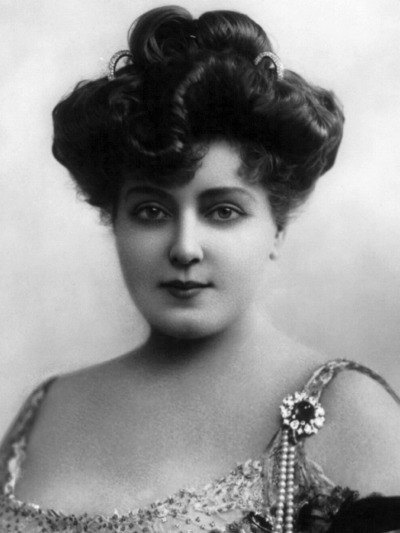
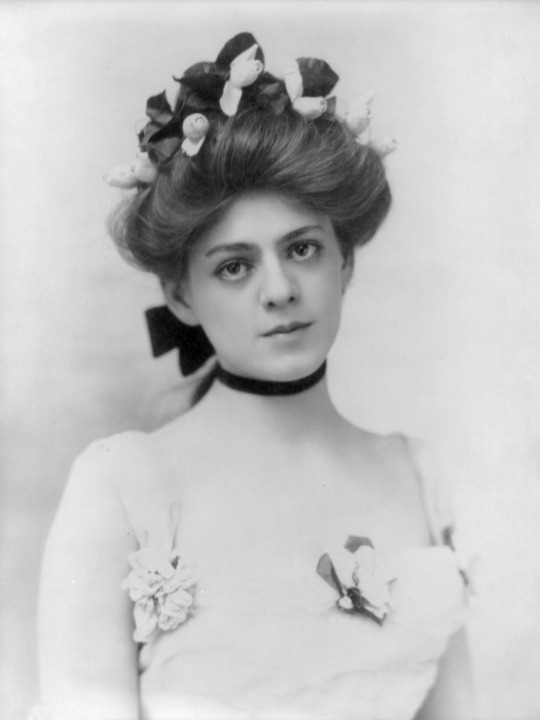
Lillian Russell: Lady Teazle in Lady Teazle (1904 Broadway); Henrietta Barrington in Wildfire (1908 Broadway); Laura Curtis in The Widow's Might (1909 Broadway)
Ethel Barrymore: Nora Helmer in A Doll's House (1905 Broadway); Rose Trelawny in Trelawny of the Wells (1911 Broadway); Rose Bernd in Rose Bernd (1922 Broadway); Juliet in Romeo and Juliet (1922 Broadway); Ophelia in Hamlet (1925 Broadway); Constance Middleton in The Constant Wife (1926 Broadway); Marie-Louise in L'Aiglon (1934 Broadway)
Propaganda under the cut
Lillian Russell:
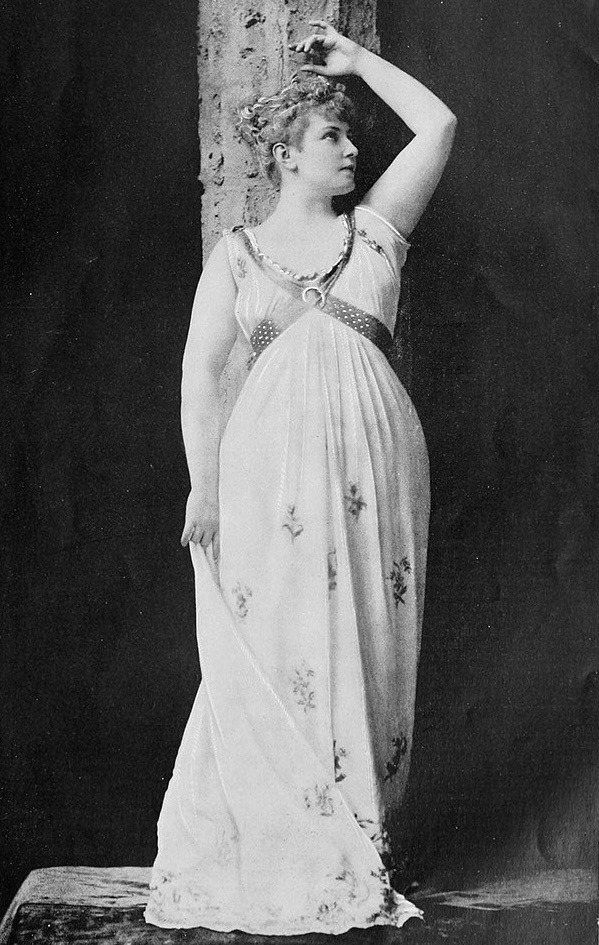
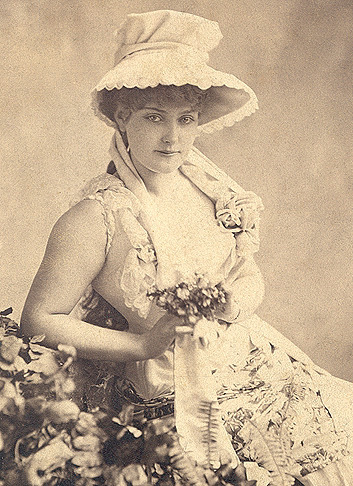
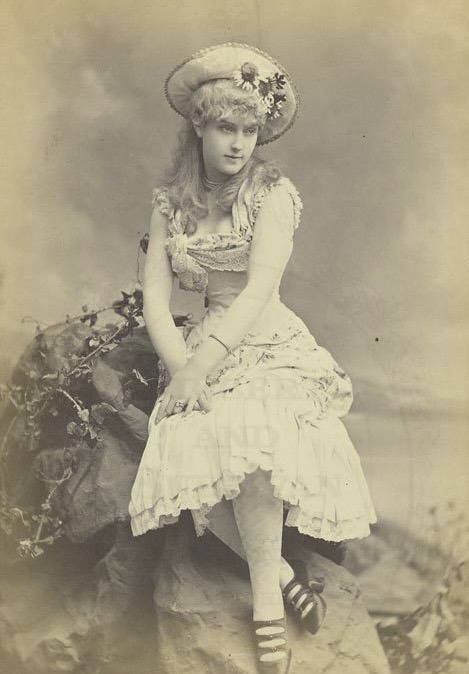
Ethel Barrymore:
Literally referred to as “The First Lady of the American Theatre,” Ethel is hands-down my favorite of all the Barrymores (no offense to her grand-niece Drew), and a certified icon. She has a breathtakingly beautiful portrait in the National Portrait Gallery of her as Madame Trentoni in Captain Jinks of the Horse Marines, the show that would make her a star. When adoring audiences kept demanding more and more curtain calls after every performance and she said “That's all there is—there isn't any more!" it became a catchphrase found all over the 1930s. She was a strong union member and instrumental in the Equity strikes of 1919, even when it cost her relationships with important Broadway producers like George M. Cohan. She had a Broadway theater named after her when she was still alive (and still actively working!), and it still bears her name nearly 100 years later. A star of her wattage is rare indeed, and on top of her myriad accomplishments, she’s really fucking hot!!! A young Ethel is beautiful, an older Ethel is dignified, the woman has PRESENCE and a knowledge in her eyes, and there’s a smidge of play dancing underneath her surface. Vote for a genuine Legend of the American Theatre, vote for Ethel Barrymore


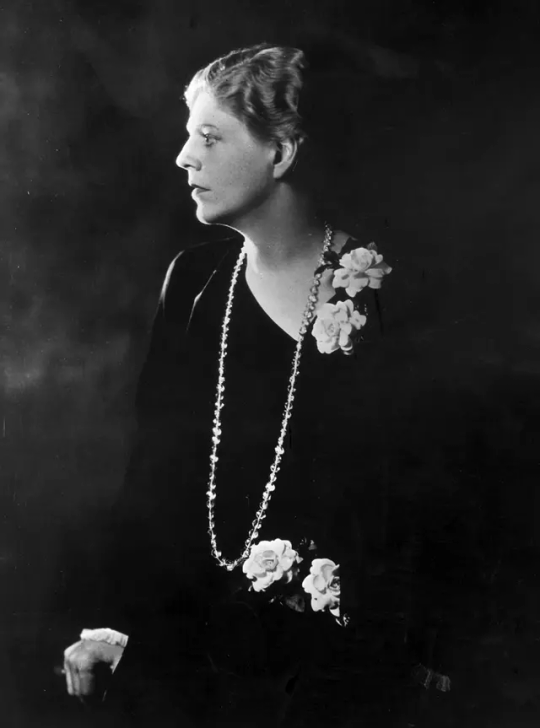



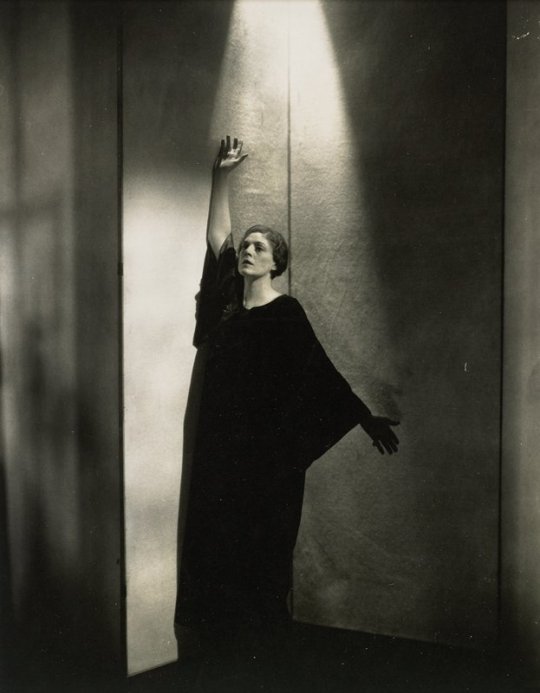
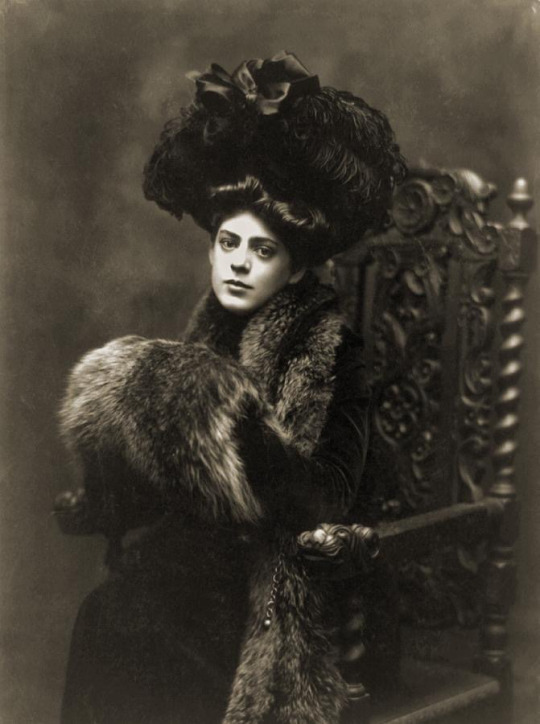
#vintagestagehotties#vintagestagepoll#vintage tournament#vintage poll#lillian russell#ethel barrymore#ladies round 1#vintage ladies
13 notes
·
View notes
Text

WK 11 - THE FLYING DUTCHMAN
You are out in the middle of the ocean. You were tasked to explore and catch different fishes in the ocean. It’s dark. The water looks like an endless pit of darkness, only being illuminated by the small lamp on your boat. You start getting cold, it’s freezing. Suddenly you see something in the distance. A shadow outline of a tall looking boat towers over the ocean. As it slowly gets closer, you realize that the boat is torn… how was it even still floating? Little did you know, you’ve been cursed by the seas. But no one will ever believe what you saw. In this blog, we will see how the depths of the sea can be ruled by one bad omen.
The Flying Dutchman is a ghostly ship that rules the deep seas. The legend began in 17th-century maritime tales from Europe, especially among Dutch and British sailors. It is thought to have started during the Age of Exploration, a time when sailors often embarked on long journeys and encountered dangerous conditions and superstitions about the sea. At the heart of the story is a Dutch captain, often called “Captain Hendrick van der Decken,” who tried to sail through a fierce storm near the Cape of Good Hope. Different versions tell the tale in various ways, but most describe the captain cursing God or swearing to sail forever. As a result, his ship and crew were doomed to wander the seas as a ghostly sight. The story gained popularity in the 18th and 19th centuries through storytelling among sailors, their experiences, and adaptations in literature. One of the earliest written records can be found in George Barrington’s Voyage to Botany Bay from 1795. The legend later inspired works like Richard Wagner’s opera Der fliegende Holländer in 1843 and Samuel Taylor Coleridge’s poem The Rime of the Ancient Mariner, which shares similar themes.
Here is the story of The Flying Dutchman…
“The Flying Dutchman was a sea captain who once found himself struggling to round the Cape of Good Hope during a ferocious storm. He swore that he would succeed even if he had to sail until Judgment Day. The Devil heard his oath, and took him up on it; the Dutchman was condemned to stay at sea forever. His only hope for salvation was to find a woman who loved him enough to declare herself faithful to the Dutchman for life — no matter what. To top it off, he could only stop sailing once every seven years, to go ashore and search for that one true love.
In Wagner's opera, the Dutchman's story is actually told three times: musically, in the overture; poetically, in the famous passage called Senta's Ballad; and dramatically, in the stage action as a whole. Following that stormy overture, we see a ship struggling to reach port in a sheltered cove. The captain is a Norwegian named Daland, who lives nearby with his daughter, Senta. Another ship appears — a gloomy-looking vessel with black masts and blood-red sails. Its captain is the legendary Dutchman. His latest seven-year stint is up, and the ship enters the harbor so the Dutchman can go ashore and search for love. The two captains meet, and Daland tells the Dutchman about his daughter Senta. Thinking she might be the woman he's looking for, the Dutchman offers Daland his entire fortune in return for an introduction. Daland agrees, and the two ships sail for Daland's home. Next, we meet Senta herself. She's in Daland's house, spinning wool with her friends, and she sings them the ballad of the Flying Dutchman. Finishing the story, she stares at a painting of the Dutchman, and says she will be the one to save him. Senta does have a suitor, a hunter named Erik. But she's obsessed with the legendary Dutchman, leaving Erik jealous of a supposed myth.
When Daland's ship lands, the other women leave to greet the sailors, and Daland arrives at home with a man Senta has never seen before. He's the Dutchman, and she immediately notices his resemblance to the picture on the wall. Daland leaves the two alone. When the Dutchman professes his love, Senta agrees to marry him. She swears she'll be faithful to him forever, and the Dutchman dares to think that he has finally beaten the curse. In port, we again see two ships — the worn and gloomy ship of the Dutchman, and Daland's bright, white-sailed vessel. From the shore, local women and the men from Daland's crew call to the dark ship and, gradually, its crew appears. They're a grim collection of men who share their captain's fate — to sail the seas for eternity. On shore, Erik comes to Senta. He reminds her of old times, and begs her to reconsider her love for the Dutchman. When she refuses, he accuses her of infidelity. The Dutchman has been listening in secret. Assuming that he has lost Senta's love, he returns to his ship and prepares to set Senta is determined to save him and follows, while others try to restrain her.
As his ship is leaving, Senta frees herself and climbs to the top of a bluff. Again, she declares that she'll be faithful to the Dutchman until death, and proves it by leaping into the sea. The curse is broken. The Dutchman's ship crumbles and sinks. A vision of Senta and the Dutchman is seen over the water, and the music reveals the story's ending: Senta's sacrifice has brought the Dutchman his peace”
Watch what you find on the roaring seas, you never know what might happen.

SpongeBob SquarePants is an animated show about the fun adventures of SpongeBob, a happy and optimistic sea sponge, and his friends in Bikini Bottom, an underwater city. SpongeBob works as a fry cook at the Krusty Krab, a fast-food place run by the greedy but funny Mr. Krabs. His best friend is Patrick Star, a silly yet lovable starfish, and he lives next to Squidward Tentacles, a grouchy octopus who wants to be a musician but often gets annoyed by SpongeBob. Other important characters include Sandy Cheeks, a smart squirrel from Texas who lives underwater, and Plankton, who owns a competing restaurant and is always trying to steal the Krabby Patty secret recipe. The show is famous for its funny moments, creative stories, and memorable characters.

The Flying Dutchman in SpongeBob SquarePants is a ghostly character inspired by a sea legend. In the show, he appears as a green pirate with a beard and a glowing appearance. He often haunts Bikini Bottom and interacts with SpongeBob and his friends, mostly to scare or punish them for what he sees as bad behavior. Unlike the darker story of the real legend, SpongeBob's Flying Dutchman is funny and silly. He can be quirky and even a bit petty. For instance, he loves to scare people and collect souls, but he also gets upset easily when things don't go his way.
Some episodes with him include:
Scaredy Pants – He tries to scare SpongeBob, but ends up getting scared himself.
Shanghaied – SpongeBob, Patrick, and Squidward accidentally get on his ship and try to get away.
Ghost Host – He temporarily stays at SpongeBob's house when his ship breaks down.
The show puts a fun twist on the darker story of the Flying Dutchman.

Pirates of the Caribbean is an exciting adventure series that follows the clever and unpredictable Captain Jack Sparrow as he sails the seas in search of treasure and freedom. The story kicks off with Jack meeting Will Turner, a blacksmith who becomes a pirate, and Elizabeth Swann, the governor's daughter. Together, they face cursed pirates on the ghostly ship, the Black Pearl. Throughout the series, the characters encounter legendary enemies like Davy Jones, the Kraken, and the East India Trading Company, dealing with curses, myths, and rival pirates. With a blend of action, humor, and mystery, the series explores themes of loyalty, freedom, and the effects of greed, all set during the thrilling golden age of piracy.

In the Pirates of the Caribbean movies, the Flying Dutchman is a famous ghost ship led by Davy Jones, a cursed pirate who must transport the souls of those who die at sea to the afterlife. The ship looks dark and scary, covered in barnacles and sea creatures, representing its eerie nature. It can dive beneath the waves and travel underwater, making it very difficult to defeat. The crew of the Dutchman is made up of cursed sailors who slowly turn into sea monster-like beings, stuck serving Jones forever unless their debt is cleared.
The Flying Dutchman is important in the series, especially in Dead Man’s Chest and At World’s End. Its story is connected to Davy Jones's mystical heart, which gives him control over the ship. The Dutchman becomes central to the struggle for power at sea and the fight between freedom and servitude, especially when Will Turner takes over as its captain, breaking the curse and taking on the duty of guiding souls. The ship represents power, immortality, and the fallout from betrayal and broken promises.
youtube
Here is an example of the Flying Dutchman in Pirates of the Caribbean: At World’s End.

To close this blog off, I never really dove into the Flying Dutchman. I really don’t have much to say about it. Do I believe in it? No, obviously not. A ghost in my house is more believable than a ghost ship. However, the sea is naturally scary. We haven’t even explored at least 10% of the ocean. So it’s nice to see supernatural beings on the surface of the sea. One of my biggest fears is the ocean. I hate thinking about running out of energy and feeling exhausted from keeping yourself up on the surface, until you stink to the bottom. No thanks. Now a ghost ship giving you bad luck, nope. The sea is already scary on its own. I don’t need a ship to give me bad luck, I AM the bad luck. I don’t know, what I’m talking about, let’s just wrap this up.
The sea is cursed with the unknown, but is also ruled by the Flying Dutchman.
2 notes
·
View notes
Text
#OTD in Irish History | 27 December:
1601 – Red Hugh O’Donnell leaves Ireland for Spain; Hugh O’Neill withdraws to Ulster. 1727 – Arthur Murphy, actor and playwright, is born in Cloonyquin, Co Roscommon. 1791 – Sixty-eight conservative members secede from the Catholic Committee, which thereby becomes more militant. 1804 – Death of pickpocket and later a policeman, George Barrington, Parramatta, New South Wales. Born in Maynooth, Co…

View On WordPress
#irelandinspires#irishhistory#OTD#27 December#Dublin#History#History of Ireland#Ireland#Irish History#Irish War of Independence#Molly Malone Statue#Today in Irish History
10 notes
·
View notes
Text

District 4
L to R:
Mags Flanagan--Victor of the 11th Hunger Games; mentor to Digger
George "Digger" Harkness---male Tribute, age 17. Volunteer
Azure O'Rourke---female Tribute, age 17. Volunteer.
Briseis Barrington--Victor of the 33rd Hunger Games; mentor to Azure (name and Game # are taken from Oisis55's excellent "The Victors Project" fic, which you should check out if you're a fan of the Hunger Games).
10 notes
·
View notes
Text
1231
Library of Circlaria
Cabotton University Timeline

Westerhill Mines
In 1204, construction was completed for an airstrip near the Westerhill Mines and workers' town in order to facilitate the importation of new workers. This airstrip would become Gentry County Airfield in the years to come.
Starting between 1205 and 1206, however, a boom in ebony mining from nearby Ebony Valley lowered ebony prices. Dave Morriston, the owner of Westerhill Mines, committed to preserving Westerhill profit margins by freezing pay raises as well as forcing workers to work longer hours for the same pay. In 1211, the mine workers, led by Merlin Kent Ogden, united and carried out a strike. Not wishing to negotiate, Dave Morriston resigned from his position and was replaced by George Cabot, a close in-law and family friend to Ogden. Thus, negotiations succeeded in improving pay, hours, and working conditions for the miners. Furthermore, housing in the town was refurbished to facilitate middle-class living standards; and Ogden was rewarded for his efforts with an especially large residence that would become the address: 124 West Mason Street.
In 1217, the dominance of Ebony Valley over the industry forced the Westerhill Mines to close. This led the economy in the former miners' town to shift to that of trading shops, predominantly those of the spellcrafter trade. While this provided stability, Combrian leadership in Hasphitat desired for more of a purpose to be served by this town. They were soon approached by Robert Barrington, who proposed to purchase the preserved lands owned by the Emoran Heritage Foundation and build a special academy to provide a second chance to those Combrians who failed out of the Combrian education system.
Combrian law required all Combrian citizens to attend school through the level of a University bachelor degree. Any person in the University system receiving failing grades would be expelled from said University system and made to take a civil service job with the option of going through military service first in order to be considered for better promotions and pay raises. The issue here was that beginning around the 1210s and 1220s, a growing number of Combrian citizens believed this doctrine to be unfair and furthermore believed that Combrian students should be given second chances.
And thus Barrington rose to the occasion by proposing a new alternative curriculum vested in the construction of the Westerhill Institute of Academic Rehabilitation.
Westerhill Institute for Academic Rehabilitation
A few groups of collective youth working as spellcrafter traders in the former miner town attempted to speak on behalf of the Emorans against the idea of converting the preserved consecrated land to the miner town's immediate South into property developed for this new Institute. However, the Combrian government utterly ignored them and approved Barrington's proposal. Construction began in 1228 and would be completed in the spring of 1231.
The Westerhill Institute of Academic Rehabilitation was "simple-oriented" in its structure, consisting of a vast grid of criss-crossing sidewalks over vast lawns. In each corner square, and in the center square, stood a large structure with a square base. Each structure had a center pillar-wing of rooms, and a pillar-wing in each of its five corners. And each structure was five floors tall. These structures were the Five Schools of the Institute, with the one in the Northwest Corner named the William Peck School of Grammar, the one in the Northeast Corner named the John Arthur School of Science and Spellfire, the one in the Southeast Corner named the John Cracker School of Mathematics, the one in the Southwest Corner named the Michael Kelvin School of History and Law, and the one in the Center Square named the Mack Schrader School of Citizenship. Each School consisted of classrooms on its First Floor and student dormitories on the remaining Floors. The overall design of the Schools and the grounds was designed to be cut-and-dry, as well as large and intimidating in order to incentivize student focus and discipline.
Every student enrolled in the Westerhill Institute was subject to the same basic curriculum: to present what one did to cause academic failure, to receive feedback from the assigned Schoolmaster (mostly shaming), and to complete an assignment schedule given by the said Schoolmaster, with said schedule involving "fundamentals" courses on the affected subject, courses that imposed intense lecture-and-drill. The assignment schedule also required each student to complete a sophisticated project which also involved writing long essays explaining how the student thought to complete each step. This would also be subject to harsh feedback from the Schoolmaster.
Robert Barrington served as the Headmaster of Westerhill Institute from 2 through 23 May 1231, after which he resigned and was replaced by Arnold Stone.
John Fleming, University Establishment
John Fleming was born in December 1208 and grew up in Bridgetown in the District of Ereautea, and pursued a career agenda to become a trade accountant. In 1227, Fleming graduated high school with good grades and enrolled in the local branch of the University of Ereautea. Fleming completed his college freshman year in 1228 with academic distinction, and was recommended to enroll into Bridgetown College, a school independent of the University system and reserved for honors students. Fleming excelled in Bridgetown College for his sophomore year, at the end of which he was accepted into their Upper Division program and assigned a field internship for his junior year. However, Fleming had a political falling-out with one of his peers during this internship, and was made to look as if he was academically incompetent. Fleming as a result was expelled from Bridgetown College and would later have his re-application rejected by the University of Ereautea.
Fleming would work a year as a groundskeeper for the Bridge but then accepted an opportunity he received by letter to enroll in the Westerhill Institute.
Martin Cross was born in 1211, and grew up in Jestopole, where he would pursue a career agenda to be a contract scriptfire planecrafter for the Edoran Kingdom. Cross graduated high school in 1229 and, like Fleming, did so with good grades. That year, Cross enrolled in the University of Combria where he, like Fleming, passed with distinction and was moreover recommended for Upper Division that same school year. For his sophomore year, Cross was tasked with completing a dymensional plane project and presenting it as a proposition to enter the Terredon Royal College in the neighboring Kingdom of the Great North. The project involved creating an imitation of the land and territory of the Duchy of Daylram set in the tenth century. And though it was deemed impressive by Cross' peers, it was utterly rejected by the Royal College, who wrote a scathing complaint to the University of Combria on this. Though the University of Combria did not discipline him over the complaint, Cross had a mental break from the outcome and largely stopped attending classes. The University of Combria would expel him for his resulting attendance issues.
Cross then received a letter to enroll in the Westerhill Institute.
Thomas Snow was born in 1212 and grew up in Ebony Valley in the District of Ereautea to pursue a career as an engineer in ebony and related hardware construction. Like Cross and Fleming, Snow graduated high school in 1230 with good grades, but decided to work one year for one of the Ebony Valley construction companies. In the summer of 1230, before he started his job, Snow trained for and attained his Spellcaster License, an achievement which he made known to his co-workers later that year. This led to abrasion with some of them, including the high manager's son, who set him up to take on an assignment that appeared to simply involve surveying territory to the immediate Northwest for ebony deposits. This turned out to be a set-up, a discovery that Snow and his fellow surveyors only made when they, during the trip out into the wilderness, encountered dangerous wysps kept and then released by the manager's son. One of Snow's surveying crew people ran off and went missing, while Snow saved the other two, discharging spells and killing two wysps in the process. They and the person that ran off were rescued, but the incident did not pass without consequence for Snow. He would later be charged with endangerment for not realizing the area surveyed was prone to wysps, and also be penalized for the killing of the wysps themselves as they were considered by the Remikran Union to be an endangered species. Snow had a lawyer who managed to reduce the sentence for the incident to simply a fine, but this would also result in academic implications later on.
Snow received good grades during his freshman year, 1230-31. However, the University of Ereautea received documentation regarding the wysp incident and the legal proceedings. Though they did not consider this a criminal disqualification, the University leadership cited Snow's apparent lack of knowledge for biology and geography to be grounds for requiring a "remedial exam" in those subjects. Though Snow knew the material, the wording of this exam led him to failing it. Snow was then made to reconsider his career path through an "aptitude exam." And while this exam was open-ended, it was possible for a student to fail it if they did not demonstrate measurable strength for any particular career path. Like the first exam, the wording of this second exam led Snow to receiving a failing score; and so as a consequence, Snow was destined to be expelled from the University system.
Westerhill Institute enrollment was selective in nature and was done by invitation. However, Snow, in the course of working in the ebony mining industry, had befriended Merlin Kent Ogden, who worked closely with the Institute and leveraged them into enrolling Snow.
And so in the summer of 1231, John Fleming, Martin Cross, and Thomas Snow became acquainted with one another.
Such a mutual acquaintance began with Cross and Snow, who were assigned roommates and were quarreling with one another over menial logistical matters. Fleming overheard the arguments and summoned Cross and Snow to his room, where the three of them shared their backgrounds and their common hatred toward the oppressive Combrian education system. Fleming was inspired by Cross' dymensional plane project and suggested that he and Snow build one here at Westerhill. Cross initially dismissed the idea as unfeasible, but Snow voiced disagreement, stating that Merlin Kent Ogden had the hardware and venue to build such an apparatus. Cross surrendered to the idea; and several days later, they met with Ogden, who agreed to the arrangement.
On 13 June 1231, Arnold Stone arrived at the Westerhill Institute to start his tenure as the new Headmaster. The next evening, he was visited by Cross and Snow, who were sent to him by the Master of the Kelvin School for poor academic performance; both students had failed an exam due to not being able to form words for answers quickly enough due to lack of sleep. Upon further investigation, Stone learned that the two students had stayed up late into the night working on the dymensional plane with Merlin Kent Ogden. In response, Stone asked to travel to 124 West Mason Street to see this dymensional plane project.
On 19 June, Stone made the visit to the venue, where instead of moving to shut down the project, Stone was impressed with it and requested to have it moved to the Library located in the Mack Schrader School. The next day, this move was made. And on 21 June, Cross and Snow presented this dymensional plane to the other Westerhill students, who took great interest. The following day, Headmaster Stone made an announcement to all Westerhill students and faculty that this dymensional plane project, now known as simply the Project, would serve as a central part of a new curriculum. Stone furthermore declared that all students and faculty would be termed equally as "Scholars" and that faculty were required to pose research questions and provide resourceful information. Stone also banned the oppressive grading system for academic performance and declared the Library open to all Scholars.
However, George Kormell, Master of the Mack Schrader School, reported Stone to the Combria Department of Education for "significant and detrimental educational curriculum deviations." The Education Department accepted the request to press this charge, and subsequently sent a letter to Stone on 13 September, dismissing him from the Headmaster position. Kormell was assigned as the next Headmaster, prompting waves of protests from the students.
As the new Headmaster, on 17 September 1231, Kormell announced his intent to re-instill the old lecture-and-drill curriculum. However, the students staged a mass-walkout and began forming human chains around each of the Five Schools, chanting "Bring back Stone!"
On 18 September, protests escalated, as students began throwing rocks and destroying property. The Masters of the John Arthur, Michael Kelvin, and William Peck Schools resigned, as Headmaster Kormell called in martial law, who, on that day, shot dead John Fleming during a heated confrontation in front of the Mack Schrader School.
This further enraged the student protestors, who, that evening, stormed the Schools under the Masters who resigned. They overtook the John Arthur School and renamed it the House of Thomas Adams, one of their still-living protest leaders. They also seized the Michael Kelvin School, renaming it the House of Alexander Norris, and the William Peck School, renaming it the House of James Randall.
On 19 September, the student protestors were joined by the former-miner town shopkeepers and the former-miners, both of whom held sympathy for the students and a common hatred toward the old Combrian system. The protestors that day stormed the John Cracker School and beat its Master to death; they would later rename this building the House of Karl Deering. In response, Kormell barricaded himself in his Office and refused calls to leave, and on 21 September, called in more reinforcements. This was countered with even more protestors, consisting of students and a growing number of allies. On 22 September, Kormell sent a ticker-text message to the Combrian government for a significant boost in money and resources to deal with this crisis, to which the government responded with a promise to do so.
Nevertheless, gridlock continued between both sides of the crisis, until 2 October, when Kormell was approached by George Cabot with a proposition to purchase the Institute as private property for a large sum of money. Kormell relented and signed a joint proposition with Cabot for approval from the Combrian government on this. The Combrian government approved the transaction, and, on 12 October, sent Kormell a letter granting him an honorable dismissal from the Headmaster position and a rewarding retirement.
George Cabot, on 13 October, transferred ownership of the Institute to Arnold Stone, who waived ownership to the Scholars. That day, they voted to rename the Institute to Cabotton University and also to rename Mack Schrader School as John Fleming House. On 2 November, the Cabotton University student body voted in a University Constitution, which mandated the University to be run democratically according to its administrative structure, as cited in a corresponding blog entry. And on 6 June 1232, Cabotton University began classes with its first Summer Semester.
Cabotton University would then begin its first official school year with a Fall Semester commencing on 2 September 1232.
<- 1203 <- || -> 1233 ->
2 notes
·
View notes
Text
Birthdays 11.22
Beer Birthdays
John Palmer (1963)
Eric Alan Clarke Sørensen (1964)
Brett Joyce (1972)
Five Favorite Birthdays
Benjamin Britten; English composer (1913)
Rodney Dangerfield; comedian (1921)
Terry Gilliam; animator, film director (1940)
Scarlet Johansson; actor (1984)
Robin Hood; fictional character (1422)
Famous Birthdays
Abigail Adams; first lady of John Adams (1744)
Wilhelm Friedmann Bach; German composer (1710)
Kristara Barrington; adult actress (1965)
Boris Becker; tennis player (1967)
Hoagland "Hoagy" Carmichael; songwriter (1899)
Tom Conti; British actor (1941)
Thomas Cook; British travel entrepreneur (1808)
Jamie Lee Curtis; actor (1958)
Robert Cavelier de La Salle; explorer (1643)
John Nance Garner; politician, 32nd US VP (1868)
Charles De Gaulle; French politician, opportunist (1890)
George Eliot; writer (1819)
Andre Gide; French writer (1869)
Mariel Hemingway; actor (1961)
Arthur Hiller; film director (1923)
Andrew Huxley; English biophysicist, physiologist (1917)
Arthur Jones; Nautilus exercise machine inventor (1926)
Billie Jean King; tennis player (1943)
Geraldine Page; actor (1924)
Wiley Post; aviator (1898)
Mark Ruffalo; actor (1967)
Roger L. Simon; writer (1943)
Roy Thomas; comic book writer (1940)
Steve Van Zandt; rock guitarist (1950)
Robert Vaughn; actor (1932)
Tina Weymouth; rock bassist (1950)
Jesse Colin Young; rock singer (1941)
1 note
·
View note
Text
One of our Imperial Viscount Landaulette wedding cars outside St George's Hall in Liverpool

#st George's hall#vintage#bride and groom#wedding cars#liverpool#wedding#cars#barringtons#wedding car#wirral#imperialviscount
0 notes
Text
Written in stoneware: The potteries of Summersite
By Jonathan Monfiletto
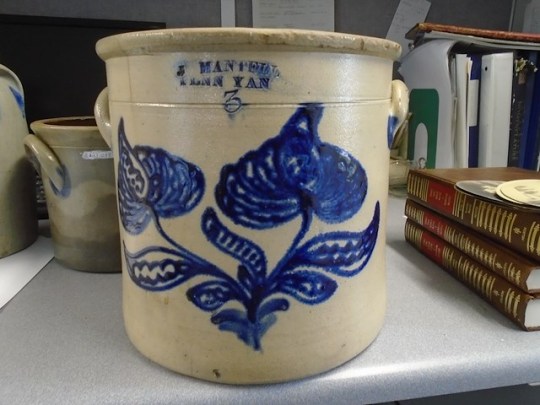
A Yates County native who has collected pieces of pottery from various local stoneware manufacturers and researched the history of many of these companies recently reached out to me with a question about the succession of these producers in the Penn Yan area. She had found a stoneware batter pail marked “Conklin & Heimburger, Penn Yan” and wondered how this company might have related to the Mantell stoneware business.
This woman had previously sparked my interest in learning about Byron Ansley and Ansley’s Dairy after she asked me about the company behind an Ansley’s Dairy milk bottle she had come across. Naturally, she now sparked my interest in learning about stoneware manufacturers in Yates County; we have traded messages to share the information we have uncovered in our research, and now I present that research here.
In fact, my research into stoneware manufacturing overlapped with another topic I had begun researching at the time. You see, as it turns out, stoneware production in Yates County appears to have been concentrated around the foot of Keuka Lake – on the east branch, where the outlet flows out of the lake and heads toward Seneca Lake – because of “a choice bed of clay” in that area, according to a May 30, 1958 article in The Chronicle-Express. This area, now incorporated into the village of Penn Yan, was once its own separate settlement outside of the village proper. It was known as Summersite.
In 1832, George Campbell founded the first pottery at Summersite – in modern-day terms, think of the intersection of Lake Street and South Avenue and the location of Red Jacket Park – after possibly working at potteries in Manhattan before arriving in Penn Yan. Another source states John Campbell established a redware pottery in the area before 1830, while his son George took over the business by 1850. This source indicates John and George came from New York City. However, a newspaper advertisement dated February 20, 1832 announces George Campbell producing earthen water pipes, candle molds, and other earthenware at his factory at the foot of Crooked Lake.
The 1958 article, written by former Yates County Historian Frank Swann, mentions the firm of Savage & Knapp operating around the same time in the same area. That appears to have been a partnership of Joseph L. Savage and Samuel Knapp, who advertised in 1846 the sale of flint ware, bricks, and earthenware pieces. According to a chapter titled “The Dundee Connection” in a book titled Stoneware of Havana, NY, Savage also enjoyed a partnership in making stoneware in Dundee with James Holmes, of Barrington, who had discovered a bed of clay on Washington Street in Dundee. The Holmes & Savage partnership lasted just a short time – as did, presumably, the firm of Savage & Knapp – as Savage formed another partnership in the village of Havana (the former name of Montour Falls) by August 1850. In 1848, Holmes had already acquired another partner by the name of Purdee, and they continued making stoneware in Dundee.
Meanwhile, George Campbell sold his pottery in 1855 to James Mantell, who had come to Penn Yan from Lyons the year before. Mantell had been a potter in Lyons from 1840 to 1853 and thus was well prepared to keep Campbell’s business going. For a brief time, Mantell had a partner in Shem Thomas, who had arrived in Penn Yan in 1853 but moved on to Harrisburg, Pennsylvania in 1856. Mantell continued his business on his own until around 1876, apparently concluding his work with his death. By this point, Swann states, the original clay deposit had been exhausted and “suitable supplies for pottery were brought from New Jersey as ballast in canal boats.”
Nevertheless, the pottery industry in Summersite remained strong, with Oscar Conklin, Mantel’s son-in-law, taking over the business. He worked with at least three partners during this time in business – his firms were known as Conklin & Patterson, Conklin & Mingay, and Conklin & Heimburger. F.J. Elliott & Co. purchased the business sometime in the 1880s – a handwritten note in our subject file dates this purchase as May 1883 – though I have not uncovered an end date for this firm or a successor to this business. At some point, this may have represented the end of the stoneware pottery industry in the Summersite area of Penn Yan.
Much like this major industry in the area, the end of Summersite is also not clear to me. I assume the settlement melded into the village of Penn Yan over time as the village grew up, but I have not yet found concrete evidence for this. What I have found, though, is concrete evidence for the start of this lakeside settlement.
According to Stafford Cleveland in his History and Directory of Yates County, the first settler at the foot of Keuka Lake was John McDowell in 1803 on land belonging to Abraham Wagener, building a double log house on the bank of the lake on the east side of the outlet. A year later, William Wall purchased a tract of land on the west side of the outlet – the present-day Indian Pines area – and took steps to form a village, including surveying the ground into lots. However, Wall died soon after, Wagener took possession of the property, and the proposed village never came to fruition.
However, on the east side of the outlet, a village did come into being with the name of Elizabethtown. By 1817, Meredith Mallory had built a flour or gristmill in the area at the head of the outlet, depending on the low fall of water near that location. However, during the construction of Mallory’s mill, Wagener raised the level of the dam at his mill at the foot of Main Street so there was insufficient water to turn the wheels at Mallory’s mill. By September 1818, Gilman Lovering was operating the Bath, Painted Post, and Geneva stagecoach line. The construction of the highway led to the establishment of several taverns in this area. Zara L. Walton purchased the line on January 1, 1819 and kept it going. Exactly one month after Walton’s purchase of the highway, on February 1, 1819, a group of citizens met at Peter Heltibidal’s tavern and approved a resolution naming the community Summersite.
No matter the name of the settlement, it did seem to hold promise for a major village. In addition to the taverns – Wallace Finch started the first one and was succeeded in its ownership by Heltibidal, George and Robert Shearman, and William Kimble – there were mechanics and a grocery, both presumably serving the stagecoach passengers and workers. In addition to the potteries, other industries sprang up in the area. Isaiah Kimble manufactured augurs and bits; later on, Azor Kimble established a carriage shop. When the Crooked Lake Steamboat Company was incorporated in April 1826, there were hopes for a boom in the village. However, the company never got off the ground – or out on the water.
The Crooked Lake Canal opened a few years later, and the age of the steamboats on Keuka Lake soon dawned. However, by that point, the sun seems to have set on Summersite. “The prospective city of Summersite has faded away,” Cleveland wrote in 1873, while Swann noted the community has been encompassed into the village of Penn Yan.
#historyblog#history#museum#archives#american history#us history#local history#yatescounty#pennyan#summersite#industry#stoneware#pottery#keukalake
7 notes
·
View notes
Text

JANE BOLEYN, COUNTESS OF WILTSHIRE ⸻ 49, JODIE TURNER SMITH.
BULLETPOINTS:
NAME: jane boleyn, nee parker.
AGE / D.O.B.: forty nine, 26th october 1510.
STATUS / RANK: countess of wiltshire.
COUNTRY OF ORIGIN: england.
PLACE OF BIRTH: norfolk.
BIRTH ORDER: first born of four children.
MOTHER & FATHER: henry parker, 10th baron morley, and alice st john.
SIBLINGS: sir henry parker, mary shelton and lady alice barrington.
SEXUALITY: heterosexual.
HOROSCOPE: scorpio.
VIRTUES: charity, diligence, gratitude.
VICES: pride, envy, anger.
MARITAL STATUS: married to george boleyn.
ISSUE: richard boleyn, viscount rochford, and utp boleyn, countess of essex.
RELIGION: protestant.
ALLIES: the boleyns,
ADVERSARIES: anyone against the boleyns tbh.
TIMELINE:
1509 ⸻ henry viii marries catherine of aragon.
1510 ⸻ jane parker is born of henry parker and alice st john.
1512 ⸻ mary parker is born of henry parker and alice st john.
1515 ⸻ henry parker is born of henry parker and alice st john.
1516 ⸻ alice parker is born of henry parker and alice st john.
1520 ⸻ jane parker is present at the field of cloth of gold (age 10).
1523 ⸻ jane parker joins the royal household of queen catherine of aragon (age 13).
1524 ⸻ jane parker marries george boleyn (age 14).
1528 ⸻ jane parker gives birth to richard boleyn (age 18).
1530 ⸻ jane parker gives birth to utp boleyn (age 20).
1532 ⸻ secret marriage between henry viii and anne boleyn, jane parker joins the royal household of queen anne (age 22).
1534 ⸻ jane parker is briefly exiled from court for aiding queen anne in being rid of one of king henry’s mistresses (age 24)
1545 ⸻ jane parker joins queen anne’s court at greenwich (age 35)
1557 ⸻ death of king henry viii.
1559 ⸻ present day (age 49).
BIOGRAPHY:
⸻ born in the dutchy of norfolk as the first born of two career courtiers, to baron and baroness morley, jane parker was raised surrounded by politics and courtly intrigue. from a young age jane was exposed to what it would mean to become a courtier and follow in the footsteps of her parents, to pave the way for her younger siblings so that their path would be easier than hers and the next generation of the parker family might be as fortunate as they were, if not more so. at the age of ten she attended the field of cloth of gold along side her father, who travelled with his fellow peers, and her mother, who rode in queen catherine of aragon’s entourage, before joining the queen’s household in a position of her own only three years later. once jane found her own position at court she seemed to blend in as though she had never been anywhere else. duties to the queen, banquets and pageants became a part of her every day life but the greatest change came in the form of a marriage proposal.
the boleyns came into jane’s life and changed everything, not only in her name, the creation of her own family and circumstance but in the entire english court. as the political climate changed within court so did jane’s loyalties, turning her away from former queen catherine to be in favour of the future queen and her new sister-in-law; anne boleyn. in her loyalty jane found herself mistrusted by those who supported queen catherine and later banished from court by the late king for aiding the removal of his newest mistress, but in spite of it all she remained firm in her loyalty to the boleyn cause and continues to do so now that a boleyn king sits upon the throne and her beloved children hold the boleyn name.
8 notes
·
View notes
Text




















Series Premiere
The Alaskans - Gold Sled - ABC - October 4, 1959
Western
Running Time: 60 minutes
Written by Lowell Barrington
Produced by Harvey Tatelman
Directed by Josef Leytes
Stars:
Roger Moore as Silky Harris
Dorothy Provine as Rocky Shaw
Jeff York as Reno McKee
Allyn Joslyn as Quag
Sam Buffington as Count Manstikov
George Mitchell as The Searcher
Anthony Eustrel as Tweed
Jack Bighead as Chilkoot
Hank Patterson as Tool Bridge Man
Roger Moore made his first American television appearence in this series. After this series ended he was cast as cousin "Beau Maverick" in the TV series "Maverick"
#Gold Sled#TV#The Alaskans#Western#1950's#1959#ABC#Roger Moore#Dorothy Provine#Jeff York#Allyn Joslyn#Sam Buffington#George Mitchell#Series Premiere
1 note
·
View note
Text






19) The American Spectator - konserwatywny amerykański magazyn zajmujący się wiadomościami i polityką, redagowany przez R. Emmetta Tyrrella Jr. i wydawany przez non-profitową American Spectator Foundation. Został założony w 1967 roku przez Tyrrella (obecnego redaktora naczelnego) i Władysława Pleszczyńskiego (dyrektora redakcyjnego od 1980 roku). Czasopismo zawierało teksty wielu autorów, takich jak Malcolm Gladwell, Greg Gutfeld i Dinesh D'Souza. Obecnie często publikowane teksty to Daniel Flynn, Paul Kengor, Robert Stacy McCain, Scott McKay, George Neumayr i George Parry. Zdobył popularność w latach 90. podczas śledztwa w sprawie Billa Clintona w ramach tego, co stało się znane jako Arkansas Project. W tym samym okresie The American Spectator otrzymał darowiznę w wysokości 1,8 miliona dolarów od Richarda Mellona Scaife'a. Pomimo tego sukcesu czasopismu nie udało się utrzymać nakładu, jaki osiągnęło w tamtym czasie, i od tamtej pory oskarżano je o „działania na szkodę społeczeństwa”, brak potwierdzeń i zaprzeczanie naukowemu konsensusowi na temat globalnego ocieplenia.
Czasopismo American Spectator jest wydawane przez non-profitową organizację medialną American Spectator Foundation. Sama fundacja została założona w 1969 roku z „deklarowanym celem wyniesienia wysokiej jakości dziennikarstwa na pierwszy plan krajowej dyskusji politycznej”. Nakład czasopisma wzrósł dziesięciokrotnie podczas śledztwa w sprawie Billa Clintona i Hillary Clinton w ramach tego, co stało się znane jako „Arkansas Project”. Jednak amerykański komentator polityczny Rush Limbaugh został uznany za twórcę popularności The American Spectator, ze względu na jego bezpłatną promocję magazynu i płatne reklamy w programach radiowych i telewizyjnych Limbaugha, które dotarły do 20 milionów odbiorców. Po niedoborach finansowych, w tym oporze Tyrella przed audytem Arkansas Project, The American Spectator został sprzedany George'owi Gilderowi, co doprowadziło do zwolnień i przeprowadzki do Great Barrington w stanie Massachusetts. Nakład nie osiągnął już prawie 300 000 egzemplarzy, jakie magazyn odnotował podczas śledztwa dotyczącego Clintonów.
Na początku lat 90. The American Spectator opublikował dwa długie eseje pisarza Davida Brocka, „The Real Anita Hill” i „Troopergate story”, oba o rzekomym niewłaściwym zachowaniu ówczesnego prezydenta Billa Clintona. Brock od tego czasu potępił poprzedni artykuł w książce z 2003 roku Blinded by the Right: the Conscience of an Ex-Conservative, w którym stwierdza, że artykuł spowodował odejście treści magazynu „od przemyślanych esejów, naukowych recenzji i humorystycznych artykułów” na rzecz „trafionych zleceń”. W 2011 roku zastępca redaktora Patrick Howley opublikował artykuł szczegółowo opisujący jego infiltrację protestu w Waszyngtonie. W artykule Howley twierdzi, że jego celem jest „wyśmiewanie i podważanie” protestu przeciwko amerykańskiemu imperializmowi i pisze w pierwszej osobie o swoich doświadczeniach z protestu w National Air and Space Museum. Artykuł ten i szczegółowo opisane w nim metody zostały potępione przez The Guardian, blog „Atlantic Wire” The Atlantic oraz The Economist, ponieważ ich zdaniem korespondenci pracujący nad tym artykułem pomylili dziennikarstwo z polityką. Matt Steinglass z The Economist napisał, że Howley „kończy na tym, że oferuje wizję polityki jako pewnego rodzaju skupionej na sobie sztuki performatywnej lub być może (mówiąc to samo) wersji Jackass”.
We wrześniu 2020 r. American Spectator Foundation złożyła pozew w sądzie federalnym przeciwko Press Holdings Media Group, firmie nastawionej na zysk, będącej właścicielem brytyjskiego konserwatywnego magazynu The Spectator. W pozwie zarzucono firmie wykorzystanie nazwy handlowej i wizerunku American Spectator podczas publikowania witryny Spectator USA i amerykańskiej wersji swojego magazynu. American Spectator został skrytykowany za „szum i histerię” oraz „niekontrolowane tyrady atakujące oczywistych podejrzanych i pozbawione dowodów”. Organizacja zajmująca się kampanią ekologiczną Greenpeace twierdzi, że magazyn jest częścią rzekomej „konserwatywnej sieci medialnej z wyraźnym wpływem Kochów [która] służy jako niezawodna platforma do ataków na naukowy konsensus dotyczący globalnego ocieplenia”.
Ostatnia miesięczna publikacja drukowana czasopisma ukazała się w lipcu/sierpniu 2014 r. Podczas gdy The American Spectator wydał wersję PDF wyłącznie na wrzesień/październik pod koniec listopada 2014 r., w stopce redakcyjnej nadal utrzymywano, że jest ona „publikowana co miesiąc, z wyjątkiem połączonych wydań lipiec/sierpień i styczeń/luty”. Notatka dyrektora redakcyjnego Władysława Pleszczyńskiego przyznała, że „...mamy własne problemy”. Pleszczyński dodał, że wydanie „było gotowe do wydania ponad miesiąc temu, ale z przyczyn dotyczących wielu publikacji drukowanych w dzisiejszych czasach nie mogło zostać opublikowane na rzeczywistych stronach i po znacznym opóźnieniu jest teraz wydawane wyłącznie w formie cyfrowej”. Następnie publikacje online stały się trwałe i dostępne.
Czasopismo powróciło do druku jesienią 2017 r. pod kierownictwem Hannah Rowan. Jest wydawane zimą i latem.
Główny zespół redakcyjny:
Redaktor naczelny - R. Emmett Tyrrell Jr.
Dyrektor redakcyjny - Wladyslaw Pleszczyński
Wydawca - Melissa Mackenzie
Redaktor zarządzający - Hannah Rowan
Starsi redaktorzy: F. H. Buckley Daniel J. Flynn Paul Kengor George Neumayr Grover C. Norquist Ben Stein
Redaktorzy współpracujący: Jed Babbin David Catron Dov Fischer Shmuel Klatzkin Jeffrey Lord Robert Stacy McCain George Parry Arnold Steinberg Larry Thornberry.
0 notes
Text

𝐆𝐇𝐎𝐒𝐓𝐒
jackie sterling | profile
version: 🇺🇸
date of birth: september 16, 1969 (virgo)
love interest: trevor lefkowtiz
faceclaim: danielle panabaker
tag: oc: jackie sterling
john tuner | profile
version: 🇬🇧
date of birth: november 11, 1917 (scorpio)
love interest: kitty higham
faceclaim: austin butler
tag: oc: john turner
plot bunnies
⤷ Michael & Daniel “Danny” Coyle (🇺🇸) • Dorcas Snowley (🇬🇧)

𝐍𝐀𝐑𝐍𝐈𝐀
patrick mallon | profile
date of birth: march 17, 1928 (pisces)
love interest: susan pevensie
faceclaim: ruairí o’connor
tag: oc: patrick mallon
plot bunnies
⤷ Aoife, daughter of Ramandu • Emily Bastable • Charlotte Thompson• George Thompson

𝐒𝐓𝐀𝐑 𝐖𝐀𝐑𝐒
tully nash | profile
era: the sequels trilogy
date of birth: 12 aby
love interest: maddox solo
faceclaim: jess bush
tag: oc: tullia ‘tully’ nash
maddox solo | profile
era: the sequels triology
date of birth: may 4, 11 aby (taurus)
love interest: tully nash
faceclaim: brenton thwaites
tag: oc: maddox solo

𝐒𝐓𝐑𝐀𝐍𝐆𝐄𝐑 𝐓𝐇𝐈𝐍𝐆𝐒
isaac mayfield | profile
date of birth: july 12, 1971 (cancer)
love interest: missy sinclair
faceclaim: jaeden martell
tag: oc: isaac mayfield
missy sinclair | profile
date of birth: october 27, 1971 (scorpio)
love interest: isaac mayfield
faceclaim: sofia wylie
tag: oc: missy sinclair

𝐏𝐋𝐎𝐓 𝐁𝐔𝐍𝐍𝐈𝐄𝐒
Bridgerton
⤷ Martha Barrington • Susannah Baxter • Alex Rokesby • Liza Stickland • Robert Wynn
Hunger Games
⤷ May Wattson
Heartstopper
⤷ Theodore “Ted” Ainsworth
Psych
⤷ Emma Spencer-O’Hara • Andrew Spencer-O’Hara • Luna Guster
Ted Lasso
⤷ Megan Armstrong • Alfie Fredericks
The West Wing
⤷ Jennifer Crane

0 notes